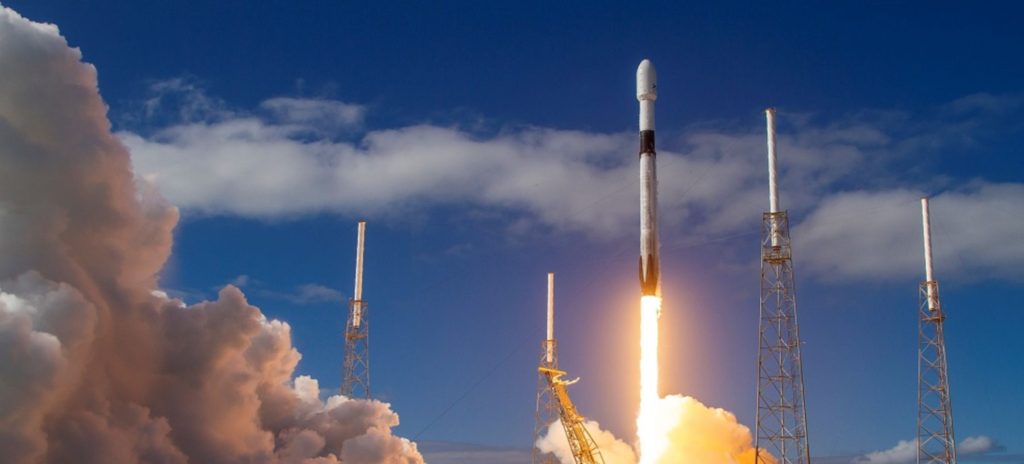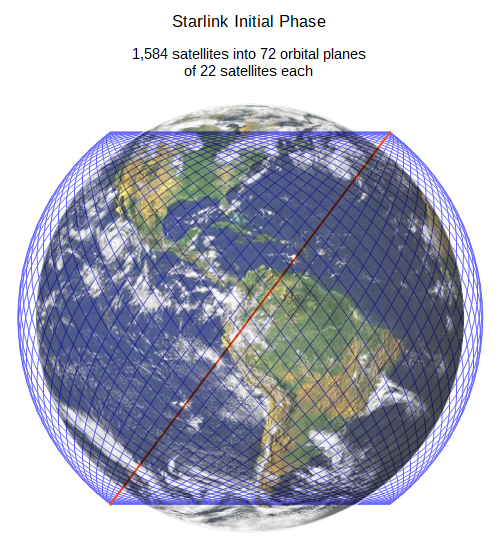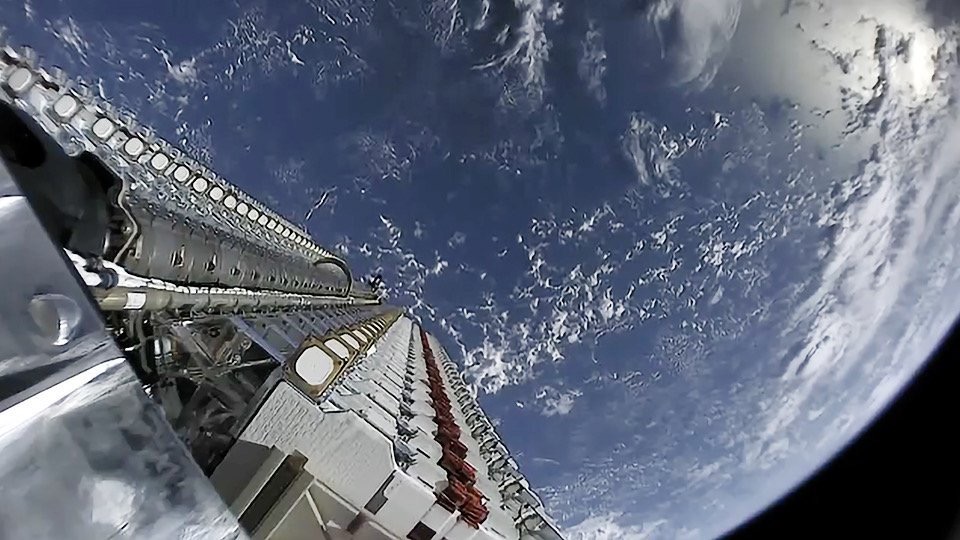SpaceX launching again this week, if all goes as planned.
SpaceX is at it again. Love it or hate it, Starlink is growing again. The company is getting ready to launch the next batch of 60 satellites into orbit in just a few days. The original launch was postponed until after the successful launch of the crew dragon Demo-2 mission for NASA.
Now that the astronauts successfully docked with the International Space Station, SpaceX turns its focus back on Starlink. This launch, originally planned to launch before the Crew Dragon Demo-2 mission, now looks promising for a launch this week.
The constellation consists of thousands of mass-produced small satellites in low Earth orbit adds up quickly. Each Falcon 9 launch gets packed full of sixty Starlink satellites. 60 satellites neatly fit in both size and mass limitations of the Falcon 9’s reusable configuration. Elon’s company delivered more than 420 satellites into orbit to date.
SpaceX now plans to loft the next batch into space Wednesday around 9:25 p.m. EDT. Visitors at the Cape Canaveral’s Complex 40 launch pad should be able to witness the launch so long as the weather holds out… and the weather is looking promising.
A one-hour launch window for the Starlink mission opening at 8:55 p.m. EDT (0055 GMT). If the launch gets scrubbed, SpaceX will cycle again for another attempt. The prior attempt at launch got scrubbed because of Tropical Storm Arthur and the associated high winds. As an additional complication for SpaceX launches, the rough seas in the recovery area where SpaceX’s drone ship waits made a landing of the Falcon 9 risky.
Worries from Astronomers: Starlink changes the night sky

This mission debuts a novel Starlink satellite not seen before. SpaceX, in response to concerned astronomers, includes additional features to reduce reflectivity. A new sunshade visor should help reduce the reflection of light and spoiling the night sky for astronomers.
The albedo of the spacecraft measured quite high coupled with the angle of light reflecting off the craft gave rise to visible strings of satellites streaking across the sky. The visor blocks sunlight from reaching the portions of the spacecraft, making them less visible from the ground. Additionally, SpaceX plans an adjusted flight trajectory and angle relative to the ground.
SpaceX plans Starlink service in the Northern U.S. and Canada starting in 2020. After initial market deployment in North America, Starlink rapidly expanding coverage to create truly near global coverage of the populated world by 2021.
SpaceX also focused on debris mitigation. The Starlink website claims the network is on the leading edge of on-orbit debris mitigation, meeting or exceeding all regulatory and industry standards. At the end of the satellite’s life, the onboard ion engine propulsion system slowly lowers the altitude over the course of a few months. Should the propulsion system becomes inoperable, satellites still burn up in Earth’s atmosphere within 1–5 years. (there are satellites still orbiting Earth launched in the 1960s.)

Krypton… isn’t that related to Superman?
No, Starlink’s power does not come from Superman’s homeworld. Rather it does draw energy from our sun with a single solar panel which powers the Krypton ion drive. Krypton is an inert noble gas with the symbol Kr and atomic number 36. There are other satellites and spacecraft using ion engines, but Starlink is the first-ever Krypton propelled spacecraft flown.
Starlink does have sort of a superpower. Starlink satellites have a built-in star tracker to allow the satellite to self orient. If that wasn’t cool enough, the satellites also can perform automatic collision avoidance thanks to some nifty new technology from the Department of Defense’s debris tracking system. This technology allows Starlink satellites to quickly, without the need for human intervention, avoid collisions reliably.
The US military also plans to test out Starlink for their own purposes. The United States Army signed a Cooperative Research and Development Agreement contract with SpaceX to test and assess Starlink’s broadband communication in military platforms. The three-year agreement with the Army will determine if the network is reliable for future military operations. The low latency of Starlink and global coverage makes Starlink an ideal option for Military communications. Even if one satellite is disabled, Starlink satellite number in the thousands once complete.
